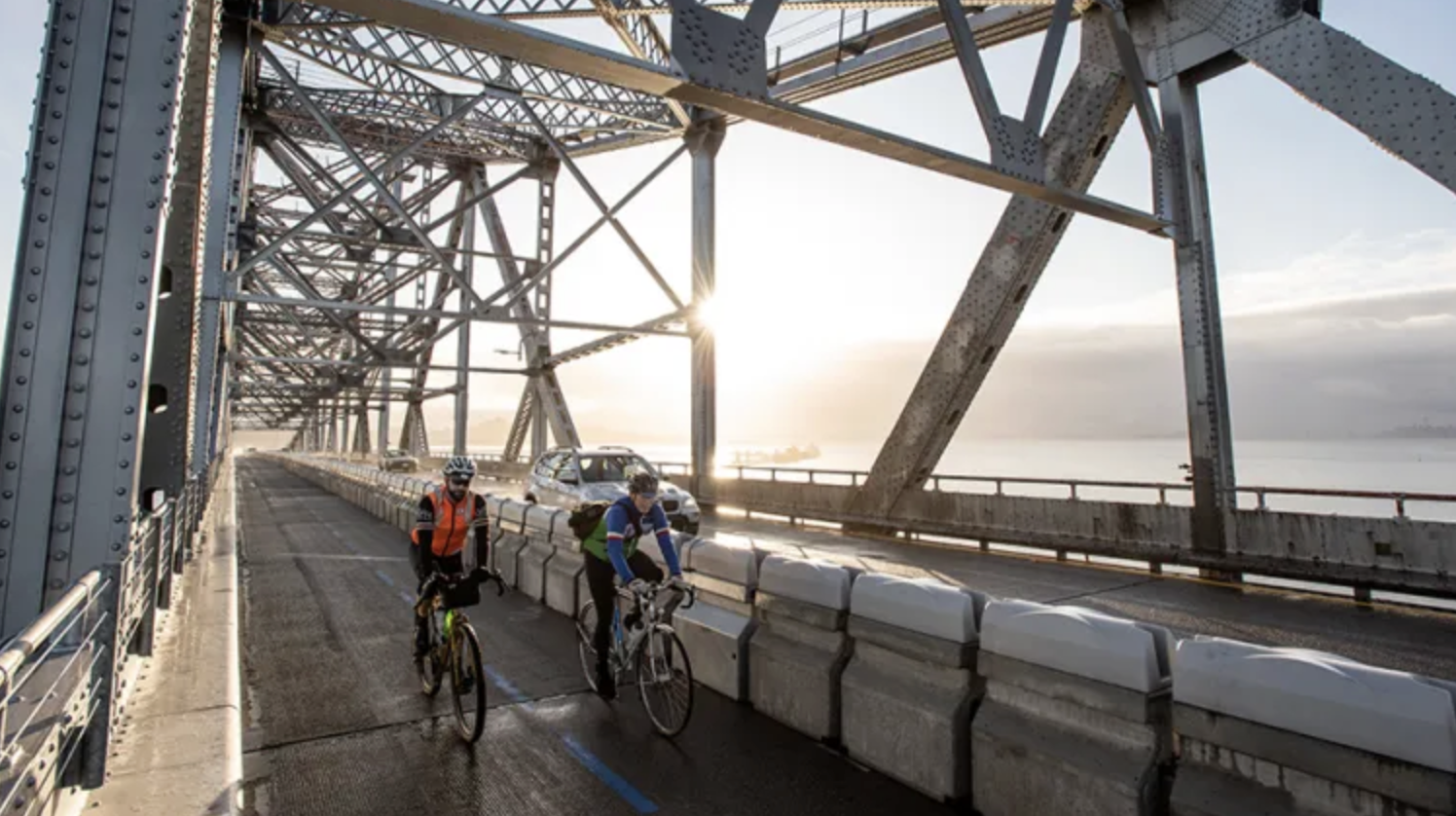Congestion has not changed since a bike lane was installed on the Richmond-San Rafael Bridge, according to Lisa Klein of the Bay Area Toll Authority (BATA). That information was part of a BATA presentation to the San Francisco Bay Conservation and Development Corporation (BCDC) given Thursday afternoon at the Metropolitan Transportation Commission's offices downtown San Francisco.
The bike lane did not remove any vehicle capacity but instead took the place of what had been a "breakdown" lane. Congestion on the bridge is still occurring at the same places and in relatively the same levels that it did before the lane went in - namely, before the toll plaza, according to Klein.
However, BATA and Caltrans still believe they have to respond to the complaints from Marin politicos and business groups who want the bike lane removed. Right now, the only excuse they have come up with to remove the lane - or rather, make it a part-time lane - is that they need data on "incidents," such as vehicle breakdowns or collisions, which can cause random delays.
Klein said that motor-vehicle incidents on the bridge since the bike lane opened generally do not involve injuries, and that overall they are down about fifteen to twenty percent over the course of the day, but up during the morning peak hours. It's unclear what affect the pandemic has had on them - or whether slightly slower traffic speeds next to the bike barrier may have contributed to reducing their numbers. The concern about incidents seems to focus on emergency response times (down about three minutes since the bike lane went in) and whether that delays vehicle traffic.
"I'd like to point out that you have 37 years' worth of data on how the bridge functions without a bike lane, and only four years of bike lane data," said Robert Prinz, Advocacy Director of Bike East Bay, during yesterday's BCDC hearing on the topic. Prinz was one of about fifteen people who showed up in person to speak in favor of retaining the bike lane in its current configuration.
BATA and Caltrans are working on a proposal for a permit amendment, which would have to be approved by the BCDC before any changes could be made. This was an informational hearing so they could present their plans, and to allow people to comment on them.
Given that the BCDC has a clear legal responsibility to "maximize public access to the San Francisco Bay," BATA and Caltrans might need a better reason to convince them to approve the permit than data collection. Note that a project already in the works - RSR Forward - would use "open tolling" to remove the toll plaza and make other changes on the bridge approaches that could completely change the traffic equation.
It's not clear why BATA and Caltrans don't just wait for that project to be implemented before rushing to change the configuration on the bridge.
Note that BATA and Caltrans are exploring the idea of using the space currently dedicated to the bike lane as another vehicle lane, but that "would require a whole new planning process," according to Klein, and is not included in any of the current discussions.
Some of the callers who opposed the bike lane seemed not to understand that, insisting they want a third vehicle lane on the bridge. Some of those comments were appallingly misinformed in other ways - so bike lane supporters should be prepared to speak up again to point out the obvious: that the wiser plan would be to leave the bike lane, continue gathering data on it, and then see what happens when RSR Forward gets implemented.





